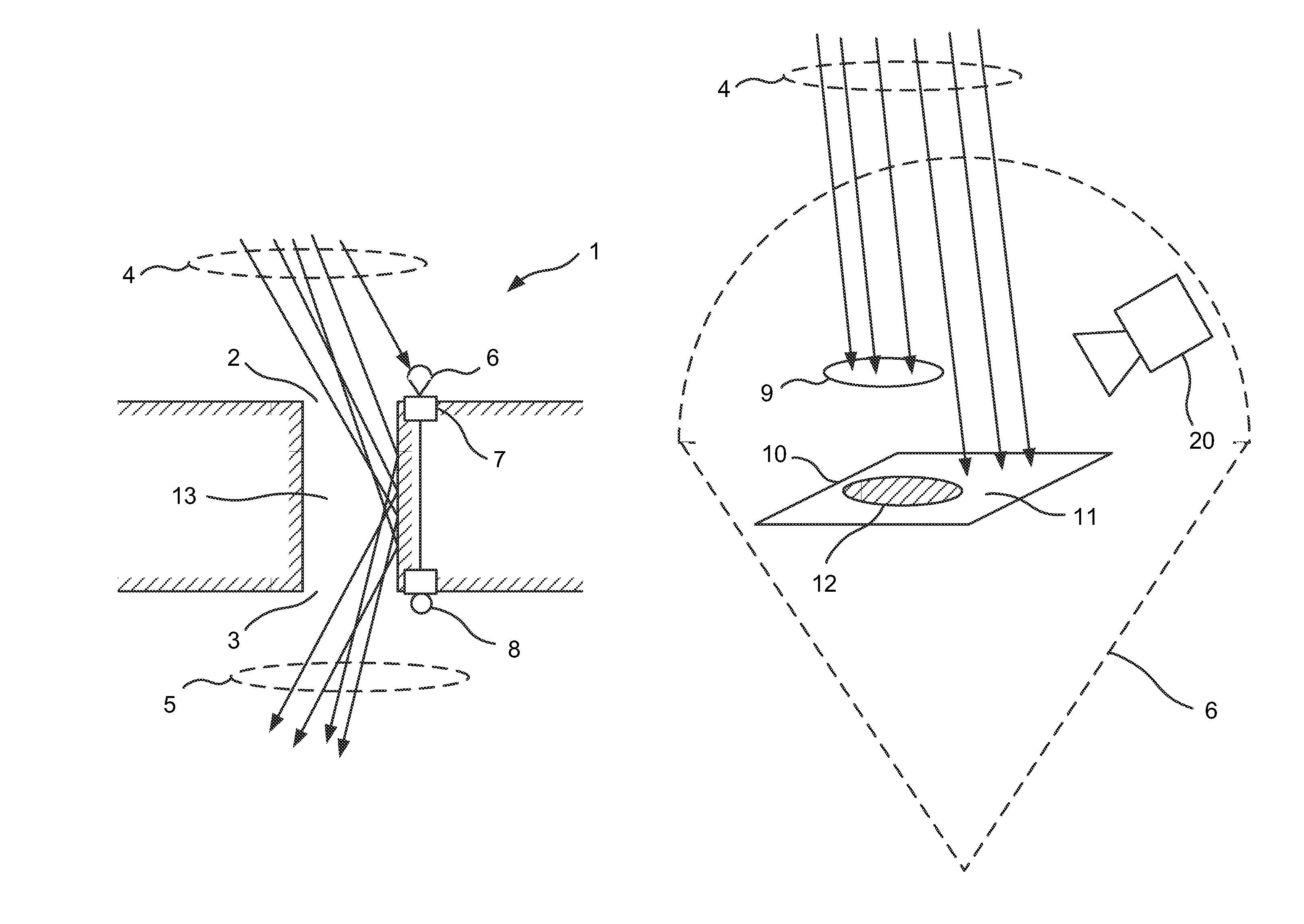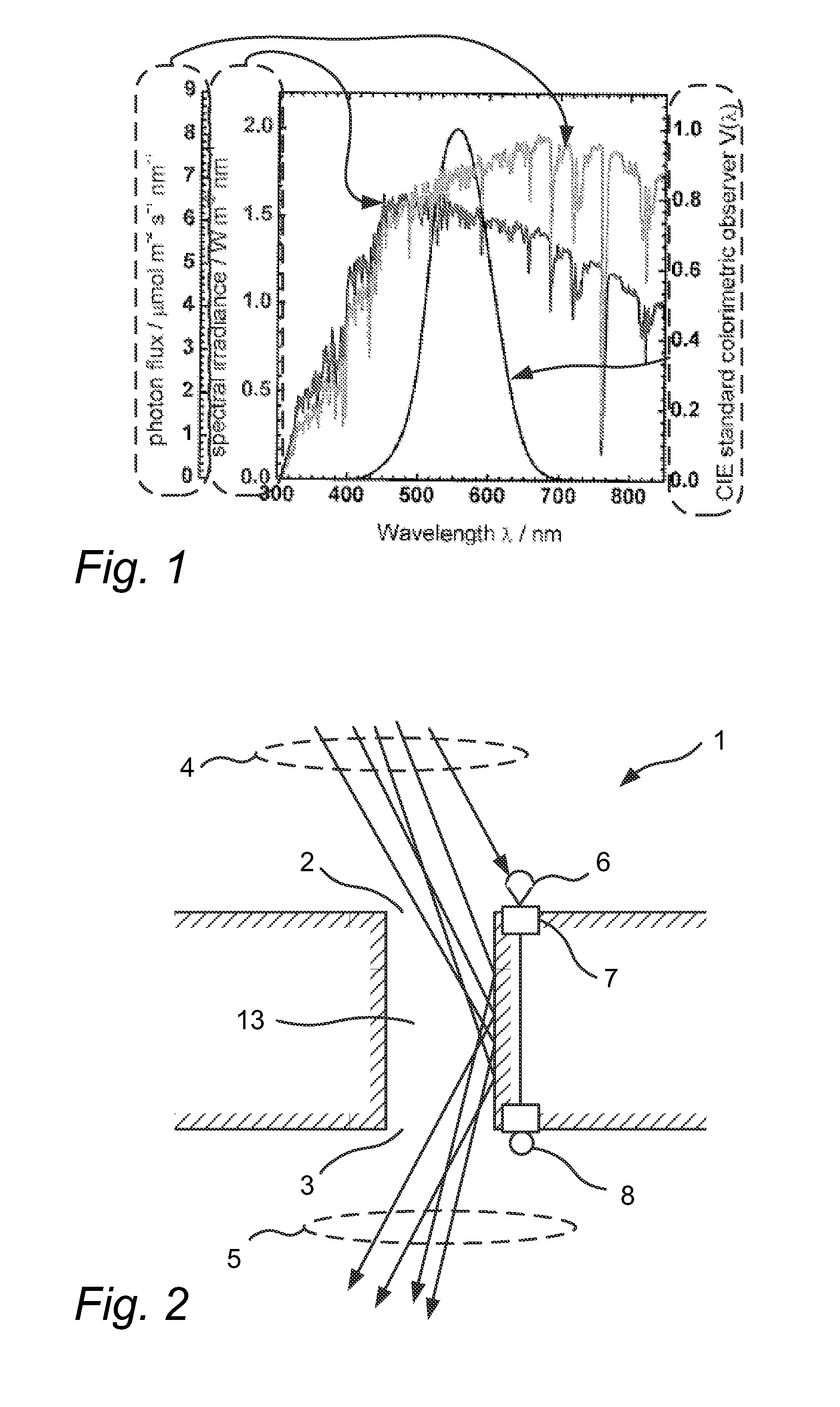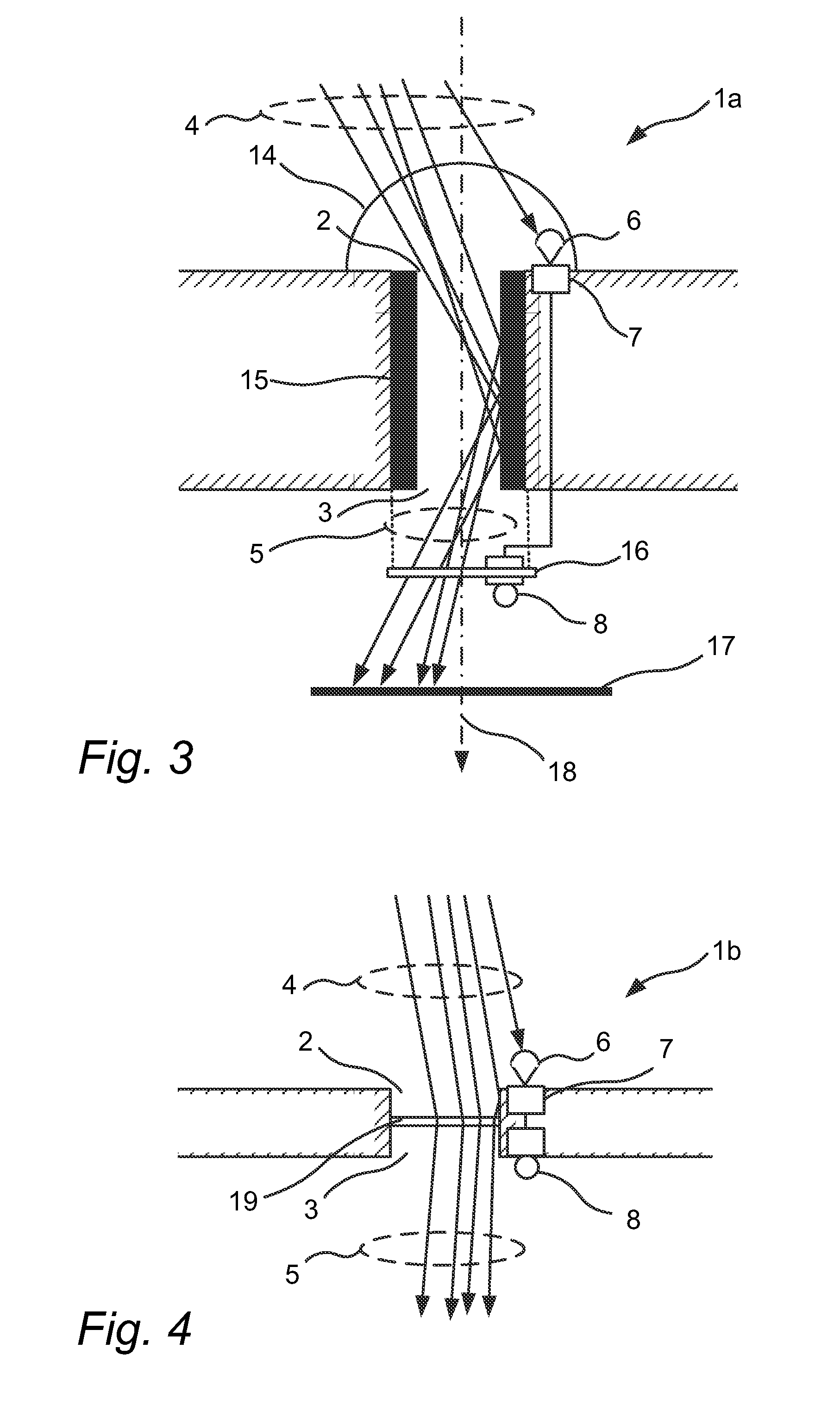Daylight sensing arrangement for a hybrid luminaire
a hybrid luminaire and daylight sensing technology, applied in the field of daylight sensing arrangement of hybrid luminaires, can solve the problems of easy to find the right position and method to accurately measure the sunlight parameters, and achieve the effect of accurately measuring the sunlight parameters
- Summary
- Abstract
- Description
- Claims
- Application Information
AI Technical Summary
Benefits of technology
Problems solved by technology
Method used
Image
Examples
Embodiment Construction
[0031]The present invention will now be described more fully hereinafter with reference to the accompanying drawings, in which currently preferred embodiments of the invention are shown. This invention may, however, be embodied in many different forms and should not be construed as limited to the embodiments set forth herein; rather, these embodiments are provided for thoroughness and completeness, and fully convey the scope of the invention to the skilled addressee. Like reference characters refer to like elements throughout.
[0032]The terms “upstream” and “downstream” as used herein relate to an arrangement of items or features relative to the propagation of light from a light source. Relative to a first position within a beam of light from the light source, a second position in the beam of light closer to the light source is “upstream”, and a third position within the beam of light further away from the light source is “downstream”.
[0033]The term “light axis” as used herein relate...
PUM
 Login to View More
Login to View More Abstract
Description
Claims
Application Information
 Login to View More
Login to View More - R&D
- Intellectual Property
- Life Sciences
- Materials
- Tech Scout
- Unparalleled Data Quality
- Higher Quality Content
- 60% Fewer Hallucinations
Browse by: Latest US Patents, China's latest patents, Technical Efficacy Thesaurus, Application Domain, Technology Topic, Popular Technical Reports.
© 2025 PatSnap. All rights reserved.Legal|Privacy policy|Modern Slavery Act Transparency Statement|Sitemap|About US| Contact US: help@patsnap.com



